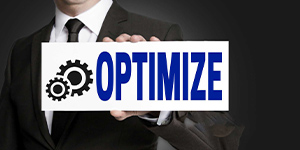How to Increase Diversity in the Workplace
Diversity in the workplace is no longer just a trendy word; it's now a must for businesses. Companies in all kinds of fields are starting to see how valuable it is to bring together people with different experiences, backgrounds, and points of view. Diversity in the workplace not only leads to more creativity and new ideas, but it also makes employees more engaged and helps the business succeed. As businesses try to make their workplaces more welcoming, it's important to know what is DEI, why having a strong diversity and inclusion strategy is important, and the different ways on how to increase diversity in the workplace.
 |
What is DEI?What is DEI? Diversity, Equity, and Inclusion is what DEI stands for. Companies use it to make sure that everyone is treated fairly and has the same chances, no matter their race, gender, age, religion, disability, or sexual orientation. |
Organizations that want to create an inclusive mindset need to know What is DEI. Diversity means that there are differences; equity means that methods and resources are fair; and inclusion means making people feel like they belong. All of these things work together to make sure that everyone feels diversity equity and inclusion in the workplace.
Why is DEI Important in the Workplace?
A lot of business leaders want to know why is DEI important in the workplace? The answer lies in how it affects work quality, new ideas, and the health and happiness of employees. Teams with a variety of people are more likely to do well than teams with only one type of person. When people from different backgrounds work together, they each bring their own thoughts and points of view, which can lead to new solutions. A strong DEI culture also makes people happier at work and keeps them from leaving. Diversity equity and inclusion in the workplace also help businesses understand and serve their diverse customer groups better, which gives them an edge over their competitors.
Benefits and Challenges: DEI Pros and Cons
There are pros and cons to every strategic project, and DEI efforts are no different. Of the important DEI pros and cons, the pros far outweigh the cons when projects are carried out well. Benefits include higher morale among employees, more innovation, better decision-making, and better financial performance. Companies with a lot of different kinds of people working for them often have better diversity in the workplace and can find it easier to hire the best people.
It can also be hard, especially when diversity is implemented without the right strategies for including everyone. For example, if minority workers are hired but not given any help, they might feel alone or like they're not worth much. Other problems that could come up are communication problems, confusion about culture, and unconscious bias. These DEI pros and cons show how important it is to work on all three pillars at the same time. These are diversity, equality, and inclusion.
The Importance of Racial Diversity in the Workplace
Racial diversity in the workplace is one of the most talked about parts of diversity. Racial representation is not only the law or the right thing to do in today's international world; it's also essential for business success. Companies that put an emphasis on racial diversity in the workplace can learn from a wider group of people. This not only helps the company come up with new ideas, but it also makes its connections with different markets and groups stronger.
Racial diversity in the workplace, on the other hand, isn't just about hiring people of different races. It means making a place where people of all races feel welcome, valued, and able to do well. Some programs that can help close race gaps and create a truly welcoming culture are mentorship programs, anti-racism training, and openness about the promotion process.
How to Increase Diversity in the Workplace
How to increases diversity in the workplace can be done in a number of different ways. It starts with leaders who are committed and continues with constant work on things like hiring, training, and the culture of the workplace. As a first step, you should look at the people you already have and see where there are gaps. This method is based on data and shows where diversity is missing and which groups are underrepresented.
Once companies know where the gaps are, they can change the job titles to get rid of any biased language, and reach out to a wider range of candidates. Partnerships with organizations that help minorities, job boards that focus on diversity and employee reference programs that are open to everyone can help you find more qualified people. It is also important to teach hiring managers how to spot and deal with unconscious bias in order to make the hiring process fair.
Also, businesses need to make sure that when they hire people from different backgrounds, they help them and give them chances to grow. Key parts of a strong diversity and inclusion strategy are setting up employee resource groups (ERGs), offering mentorship and making sure that everyone has equal access to leadership development programs.
Creating an Effective Diversity and Inclusion Strategy
For a diversity and inclusions strategy to work, it needs to be in line with the organization's goals, and work with all of its processes. It should be supported by the company's top leaders and built into the purpose, values, and day-to-day work. DEI goals should be well-defined, measured and looked at often.
Another important part of a good diversity and inclusions strategy is communication. The company's DEI goals and the work being made should be shared with all employees. Being open and honest helps everyone in the company trust each other and take part.
For building a mindset of inclusion, people must also keep learning and training. Workshops on allyship, cultural competence and inclusive leadership can help workers understand what they can do to make the diversity equity and inclusion in the workplace. Celebrating cultural heritage months and allowing open conversation about DEI issues are also good ways to raise awareness and get people involved.
Conclusion
In the fast-paced and diverse world of today, businesses can't ignore how important it is to be diverse, fair, and inclusive at work. Figuring out what DEI is, why is DEI important in the workplace, and the pros and cons of DEI are all important steps in creating settings where everyone feels welcome. The goal should be to make the workplace a place where everyone feels respected and able to do their best, whether that means bringing in more people of different races or coming up with a full diversity and inclusion plan.
The road to true inclusivity is a long one that needs conscious work, openness, and commitment from leaders. Companies can get the most out of their employees and be successful for years to come by working on how to make the workplace more diverse.
Read More: Generational Diversity in the Workplace: Strategies for Inclusion





